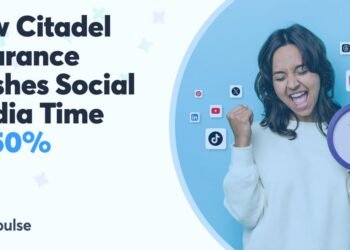
CBRE’s global communications and media manager shares why letting go of perfect might be the smartest move for communicators navigating today’s fast-changing tech landscape.
Claudia Nwaogu, global communications and media manager at CBRE, leads global efforts in brand, media and employee engagement. Nwaogu is a seasoned communicator known for blending strategy with storytelling to drive business results. At CBRE, she’s also at the forefront of using AI in comms, making it easier for teams to work smarter, personalize content and deliver with impact.
You’ve led teams through AI adoption—what’s your advice to a communicator who’s curious but intimidated by all the new tech?
My first piece of advice: start small. You don’t need to become an AI expert overnight. Begin by experimenting with tools you already have access to — like ChatGPT or Microsoft Copilot. Try using them for low-risk tasks: summarizing meeting notes, drafting first-pass content, or brainstorming campaign ideas. These small wins build confidence and show you how AI can be a true partner in your workflow.
Second, reframe AI as an assistant, not a replacement. I’ve found that when communicators see AI as a creative collaborator — one that helps with the heavy lifting so they can focus on strategy and storytelling — it becomes a lot less intimidating. You’re still in control. The tech just helps you get there faster.
Also, lean into your strengths as a communicator. We’re naturally good at asking questions, interpreting nuance, and adapting messages for different audiences. These are exactly the skills that make you great at prompting AI tools effectively. Think of it as a new language you’re already halfway fluent in.
Finally, don’t go at it alone. Create space for team learning — partner with colleagues who are also interested in getting started with AI— share use cases and exchange prompts that provide great results. Adoption works best when it’s collaborative and low-pressure.
What’s the most exciting (or underrated) use of AI in communications today?
The ability to personalize internal communications at scale. Think about something as routine as a company newsletter or internal blog. Traditionally, it’s a one-size-fits-all message. But with AI, we can now tailor that content based on an employee’s interests, region, business line, or even their preferred format. That means someone in finance in the Americas might see different stories or highlights than someone in sales in APAC, and both feel like the content was made for them.
This kind of personalization isn’t just a “nice to have”—it drives engagement, improves information retention and helps employees feel more connected to the organization.
If you could go back in time, how would you coach your younger self at the start of your comms journey?
If I could sit down with my younger self, I’d start by saying: “Don’t be afraid to experiment.” Early in my career, I thought I had to get everything perfect before sharing an idea or launching a campaign. But communications is a living, breathing process. The best insights often come from testing, iterating, and learning in real time. AI has only amplified that—now we can test messages, analyze sentiment and pivot faster than ever.
Also, I’d remind myself: “Your voice matters.” It’s easy to get caught up in approvals, metrics, and messaging frameworks. But at the heart of it, communications is about connection. Whether you’re writing a press release, a CEO speech, or an internal update, your ability to bring clarity, empathy, and authenticity to the table is your superpower. Don’t underestimate it.
What’s the project you’re most proud of and what made it so memorable?
The project I’m most proud of is launching an AI pilot program that was designed to explore the full capabilities of the AI tools available to us at CBRE. It wasn’t just about testing technology—it was about reimagining how we work.
We kicked off a 6-week pilot with a global, cross-functional group of employees from different business lines. The goal was to understand how AI could enhance our roles, streamline workflows, and identify both the opportunities and the challenges that come with adoption. What made it so memorable was the level of engagement and curiosity from the participants. The participants weren’t just using the tools—they were experimenting, sharing, and thinking critically about how AI could support their day-to-day work.
By the end of the program, we had built a robust library of real-world use cases, developed clear guidance for employees on how to use AI tools effectively and empowered participants with the knowledge and confidence to become advocates within their teams. That momentum led to the creation of our AI Champions program, which identifies and supports employees who serve as ambassadors for AI adoption across our global team.
What started as a pilot turned into a blueprint for successful AI integration—and it’s been incredibly rewarding to see it scale and inspire other teams.
What’s the most challenging part of your job?
One of the most challenging parts of my role is navigating the balance between innovation and change management, especially when it comes to introducing new technologies like AI.
On one hand, I’m incredibly excited about the potential AI has to transform how we communicate, collaborate and create. But on the other hand, I know that not everyone is ready to jump in headfirst. People have valid concerns about job security, data privacy, or simply the learning curve. The challenge becomes: how do you bring people along for the journey in a way that feels empowering, not overwhelming?
It requires a lot of listening, empathy, and patience. You have to meet people where they are, provide clear and practical guidance, and create a safe space for experimentation. It’s not just about rolling out tools—it’s about building trust and helping people see what’s possible.
Another challenge is keeping up with the pace of change. The AI landscape evolves so quickly that what’s cutting-edge today might be outdated in six months. I’m constantly learning, testing and translating that knowledge into something actionable for my teams. It’s a lot—but it’s also what makes the work so exciting.
Is there a book, song or podcast that shifted your perspective on work, leadership or creativity?
One moment that stuck with me wasn’t from a book or a traditional leadership podcast—it was a conversation between two of my favorite creatives: Janelle Monae and Issa Rae. They were discussing the entertainment industry, and Janelle said something that instantly resonated with me: “I come in peace, but I mean business.”
That quote has become a kind of mantra for me. It perfectly captures how I approach my work and leadership style. I come humbly—open to new ideas, respectful of others’ perspectives, and always striving to create inclusive spaces. At the same time, I’m confident in who I am, what I bring to the table, and the value I deliver. I want to produce great work, and I take that responsibility seriously.
The quote reminds me that you can lead with empathy and still be assertive. You can be collaborative and still have a strong point of view. That balance of peace and purpose—is something I try to embody every day.
To learn how Claudia Nwaogu uses AI to personalize internal comms—from smart intranet tips to tailored town hall content, join Ragan’s Revitalizing Newsletters and Town Halls to Drive Engagement webinar on Tuesday, Aug. 12. Register here.
Isis Simpson-Mersha is a conference producer/ reporter for Ragan. Follow her on LinkedIn.
The post How CBRE’s Claudia Nwaogu is turning AI curiosity into confidence appeared first on PR Daily.














